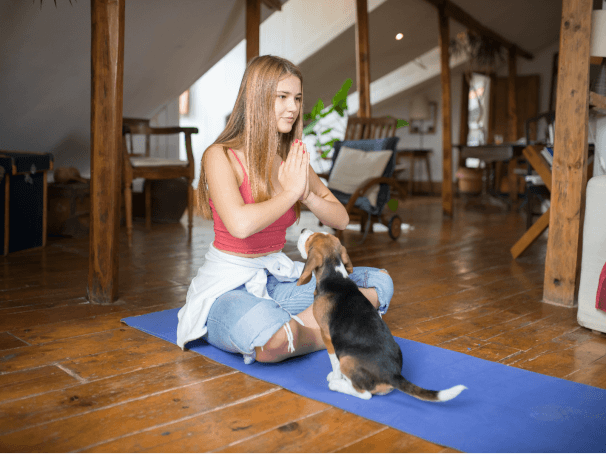
Treating anxiety can be difficult. Not only is anxiety something that's been created from years of experiences - anxiety also fuels itself, causing it to create a type of anxiety cycle that requires a great deal of intervention in order to treat successfully.
Cognitive behavioral psychologists depend on many tools to try to break that cycle and improve your ability to control anxiety. One such tool is known as exposure therapy, and studies have shown it is one of the most effective ways to combat short and long term anxiety.
Exposure Therapy and Anxiety Disorders
Exposure therapy is just one of several treatments for different anxiety disorders, and the therapy itself is used differently depending on the type and severity of the disorder.
But exposure therapy has been proven to be very effective at controlling anxiety. It's based on well research psychological principles, and studies have shown that completed effectively, it is one of the best possible ways to stop anxious reactions to various thoughts and stimuli.
What is Exposure Therapy and How Does it Work?
Exposure therapy is based on the idea of fear "extinction." Its origins are based on studies that show that the human brain habituations to stimuli when they fail to produce the expected reaction. When forced to confront a fear for a long enough period of time, the mind essentially adapts to the stimulus that causes that fear to the point where it stops finding it stressful altogether.
The best way to explain this is with an example. Pretend you have a phobia of something silly, like pencils. You are deathly afraid of pencils, to the point where you avoid them altogether and run away when you see them.
Now, imagine a psychologist locked you in a room with a pencil, and you couldn't come out. At first, you'd be terrified - you'd experience a severe fear response. But after a while, when nothing happens, your mind will start to adapt. You'll get used to the pencil's presence, and eventually it will stop causing fear. The brain adapts to the pencil, because the human brain hates being under stress, and when no danger occurs it will purposefully reduce that stress by reducing the amount of anxiety it experiences in the presence of the stimuli.
This is how exposure therapy works. It takes advantage of the principle of extinction (which is, in essence, when you're no longer afraid of a feared stimulus) by introducing you to the feared stimulus slowly until you're not afraid anymore.
Important Question: Why Doesn't Extinction Work Naturally?
You may be wondering why extinction doesn't happen naturally with irrational fears. After all, if you have a fear of a pencil, and you come across a pencil, nothing happens - so why doesn't the fear go away?
The answer is because for extinction to work, people have to wait and be in the presence of the feared stimulus until it doesn't cause anxiety, and most people don't do that. In fact, most people try to avoid or flee from things that cause them fear, and this creates a negative reinforcement effect that actually increases the amount of fear you experience in the future.
It's not just objects either. People also fight their own thoughts, trying as hard as they can to stop thinking about the things that bother them. This type of avoidance is has a negative effect on your ability to overcome your anxieties.
Exposure Therapy and Specific Disorders
This type of therapy differs depending on the type of disorder a person experiences. In order to better understand the issues surrounding each disorder and how exposure therapy can be valued, we'll break them down into categories below:
Specific Phobias
Exposure therapy started with phobias. Phobias are intense fear of something that doesn't deserve that type of fear response, like spiders, snakes, driving, or heights.
Generally, psychologists will use a type of therapy known as systematic desensitization, which is a type of exposure therapy. Let's say the client has a fear of spiders. The steps to reduce this fear may be as follows:
- The client will first imagine a spider until the thought no longer produces a fear response.
- Then they may look at images of spiders until they no longer invoke fear.
- Then they may be in the same room as a spider, except the spider will be in a cage.
- Then they may be in the same room as a spider with no cage.
- Then they may finally touch the spider.
Anyone that has a fear of spiders is probably aware how frightening it would be to jump to the last step. But using exposure therapy, over time each step will be easier until you reach the final step and fully overcome your fear response. Psychologists will do something like the steps above with nearly each type of phobia.
Post-Traumatic Stress Disorder
PTSD is believed to respond very well to exposure therapy. It has evolved so much that there are currently virtual reality tools to help with exposure, especially for veterans.
Exposure therapy is best left in the hands of experts for those living with PTSD because of the risk of a psychological break. But there is strong evidence that repeated exposure and relaxation tools for those that have overcome trauma are successful at relieving some of the issues with overcoming PTSD.
It will likely start with trying to relive your trauma on purpose, and come to terms with the experiences. From there, a psychologist may have you start working with the triggers that cause you to experience severe anxiety, whether it's noises, people, or situations. PTSD is a complex disorder that can differ in its treatment based on individual traumas, so your psychologist will come up with a specific plan for you.
Panic Disorder
Exposure therapy can also be used in panic disorder. Panic disorder is characterized by intense feelings of extreme anxiety and doom, almost always as a reaction to your own body. While people can occasionally experience panic attacks due to surprise, danger, or a fearful situation, most panic attacks are triggered by physical sensations, either because they trigger fear over something being wrong with your health (like a heart attack) or fear that you may experience a panic attack.
Psychologists use exposure therapy to reduce the effects of these triggers. The triggers still happen, but if you don't experience anxiety as a response to these triggers you can decrease the likelihood of a panic attack, and potentially decrease the severity of the attacks you do have. Examples of triggers include:
- Dizziness
- Lightheadedness
- Chest pains
- Rapid heartbeat
- Trouble breathing
There are several different techniques that can be used to purposely cause these sensations to occur. For example, a psychologist might have you spin around in a circle in order to simulate dizziness, and then work with you to calm you down from your anxiety.
This type of desensitization can be very effective. It tends not to control all panic attacks, but it does seem to effectively reduce the severity and frequency since you will not be responding to those sensations with as much fear.
Obsessive Compulsive Disorder
Obsessive compulsive disorder can actually benefit greatly from exposure therapy. But it's not just compulsions that can be exposed to the person. It's the obsessions as well.
One of the biggest issues with OCD is that the person suffering simply cannot get rid of the anxiety causing thoughts. They try and they try and unfortunately the thoughts keep coming back and each time they do they get extreme anxiety. This is why they are called "obsessions," because the thoughts keep coming back over and over and over.
So exposure therapy is used to help a person get rid of this fear producing thought. They are essentially told to continue thinking about the obsession on purpose and not forget about it until it doesn't cause that much anxiety. Studies have shown that by continuing to focus on a negative thought, eventually you get used to the thought and experience less anxiety, thus decreasing the way that the obsession controls your life.
You can of course be exposed to the compulsions as well. For example, if you have a fear of germs, you can be told to touch mud or garbage and sit and wait for your anxiety to go away. It can take a while, and it's often done in the presence of experts, but it can be very beneficial.
How to Perform Exposure Therapy at Home
One of the reasons that exposure therapy is best left in the hands of experts is because psychologists are trained to talk you down if the anxiety gets too high, and are also there to make sure you can't quit. That accountability is important - if the anxiety gets too strong and you stop the exposure before you've calmed down, you can actually make it more likely to experience anxiety in the future and make exposure therapy more difficult.
But it is possible to perform it at home. If you're going to, consider the following:
- Learn as much about your anxiety as possible. We have an anxiety test on this website to help, and hundreds of pages related to your disorder and its symptoms. It's very important you understand why your disorder occurs, because you need to make sure that you're targeting the right things.
- Make a list of gradual ways to reduce anxiety over a single issue. With obsessions and panic disorder, you may not be able to lead up to it naturally. But with phobias and PTSD, it's better to start slow and take your time working your way up. In the phobia example, the gradual exposures were thinking about the stimulus, looking at photos of the stimulus, staying in the same room as the stimulus, and touching the stimulus. You can also consider videos (after photos) and other tools.
- Consider having someone hold you accountable. Remember, if you experience too much anxiety and stop before you're fully calm, you can make your anxiety worse in the future. You need to make sure that you're accountable, whether that's having someone help you or simply making a promise to yourself.
- Learn relaxation strategies. When you feel anxiety, you need to continue to expose yourself to the stimulus until it no longer causes anxiety. There are no breaks, so instead of a break, you need to make sure that you know ways to relax so that the anxiety doesn't continue to affect you. Deep breathing, progressive muscle relaxation, and yoga are a few, but you can also use your own relaxation tips or try to relax cold turkey.
- Start the exposure therapy. Remember that you cannot stop a stimulus until you no longer feel anxiety in its presence. If you're looking at a photo of a spider and feeling anxious, don't go to the next photo until the photo itself has completely stopped causing anxiety. You may even want to test yourself later to make sure that the photo continues to not cause anxiety, then move on to the next photo. If you're making yourself dizzy to stop anxiety over panic attacks, you can wait until you're not dizzy, but don't quit until being dizzy causes less anxiety.
- You don't need to do it all in one day. Once you've found that you're no longer anxious with some part of a stimulus, you can stop and try it the next day. Give yourself a bit of a break. But before you get back to it, make sure that you're still not anxious from that stimulus before moving onward. If looking at photos of spiders continues to cause anxiety, then you need to keep doing it until you're ready to move on to videos for example.
- Keep going until you've successfully beaten your anxiety producing stimuli.
- Once you've finished, don't forget to test yourself further on different days. It's one thing to overcome an anxiety, but you'll still need to keep it away. Don't let yourself be "done" just because you've beaten it. Make sure that you continue the exposure therapy even after it's stopped causing anxiety to ensure that it never comes back.
With panic disorder, many of the symptoms are caused by hyperventilation. So some people find hyperventilating on purpose is as powerful way to keep that anxiety away.
If there's any reason to be concerned that you may have a severe reaction to these exposures, do it in the presence of a doctor. Those with a heart condition, for example, may want to make sure a trained medical professional is running the show just in case anything goes wrong.
But in general, it is possible to perform exposure therapy yourself. If you truly believe you can handle exposure therapy, it is one of the most powerful ways to reduce anxiety.












